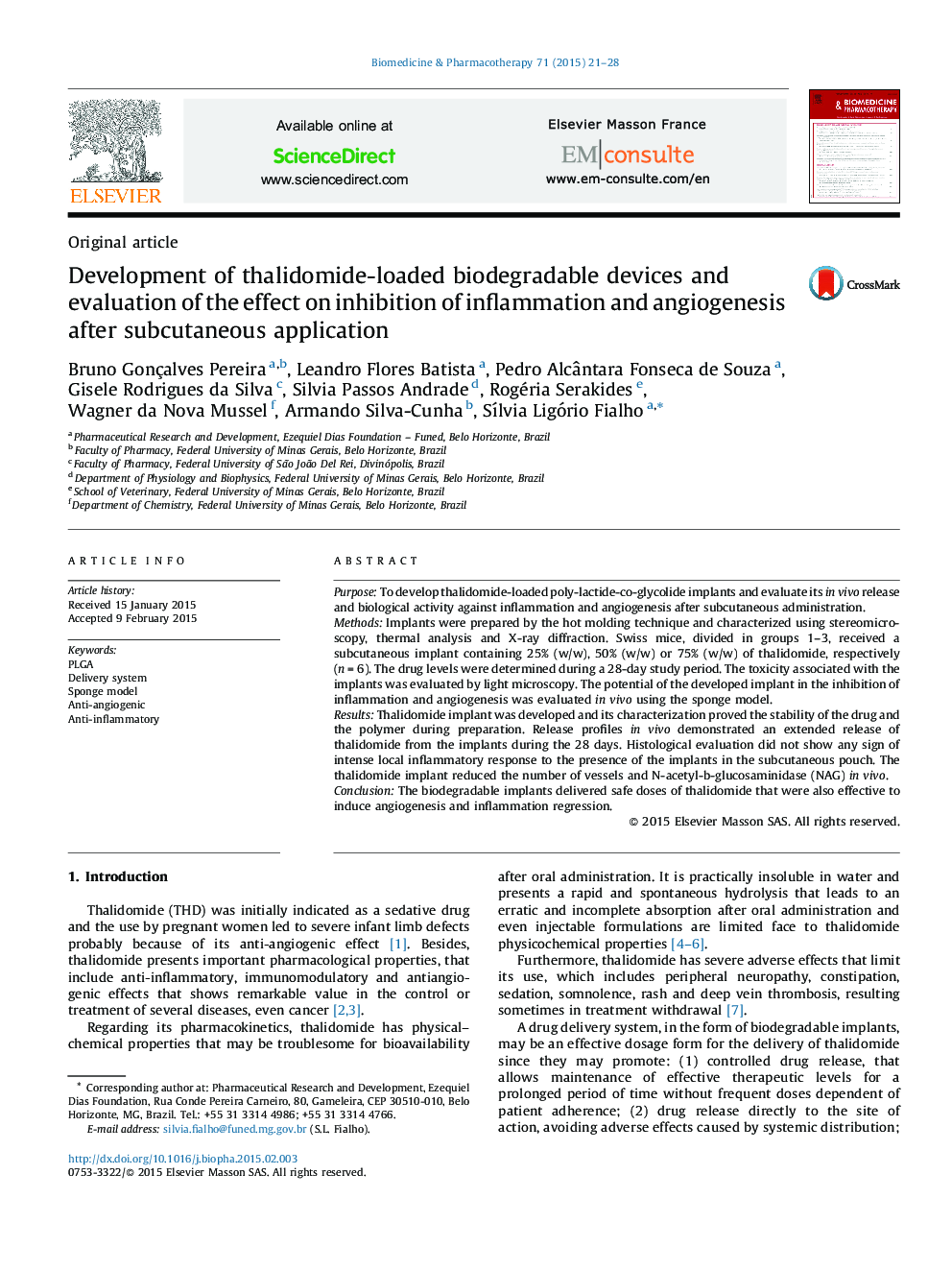| Article ID | Journal | Published Year | Pages | File Type |
|---|---|---|---|---|
| 2524073 | Biomedicine & Pharmacotherapy | 2015 | 8 Pages |
PurposeTo develop thalidomide-loaded poly-lactide-co-glycolide implants and evaluate its in vivo release and biological activity against inflammation and angiogenesis after subcutaneous administration.MethodsImplants were prepared by the hot molding technique and characterized using stereomicroscopy, thermal analysis and X-ray diffraction. Swiss mice, divided in groups 1–3, received a subcutaneous implant containing 25% (w/w), 50% (w/w) or 75% (w/w) of thalidomide, respectively (n = 6). The drug levels were determined during a 28-day study period. The toxicity associated with the implants was evaluated by light microscopy. The potential of the developed implant in the inhibition of inflammation and angiogenesis was evaluated in vivo using the sponge model.ResultsThalidomide implant was developed and its characterization proved the stability of the drug and the polymer during preparation. Release profiles in vivo demonstrated an extended release of thalidomide from the implants during the 28 days. Histological evaluation did not show any sign of intense local inflammatory response to the presence of the implants in the subcutaneous pouch. The thalidomide implant reduced the number of vessels and N-acetyl-b-glucosaminidase (NAG) in vivo.ConclusionThe biodegradable implants delivered safe doses of thalidomide that were also effective to induce angiogenesis and inflammation regression.
